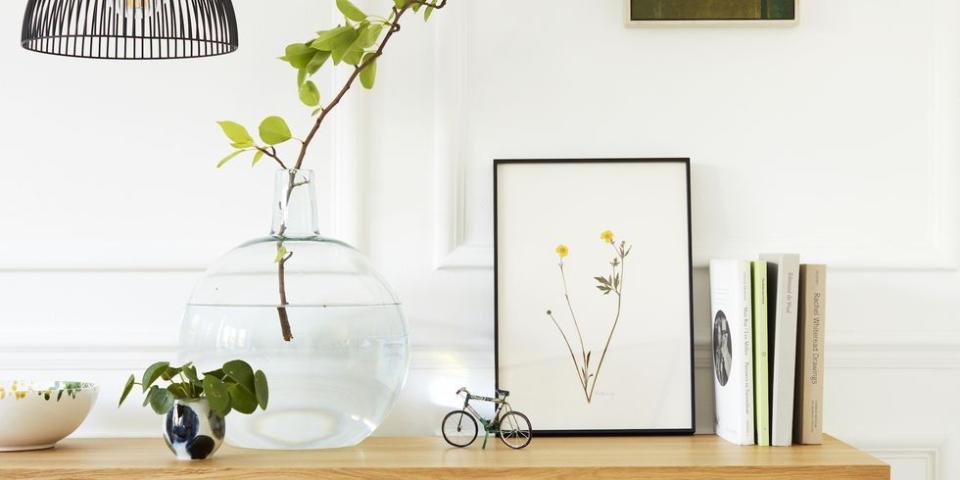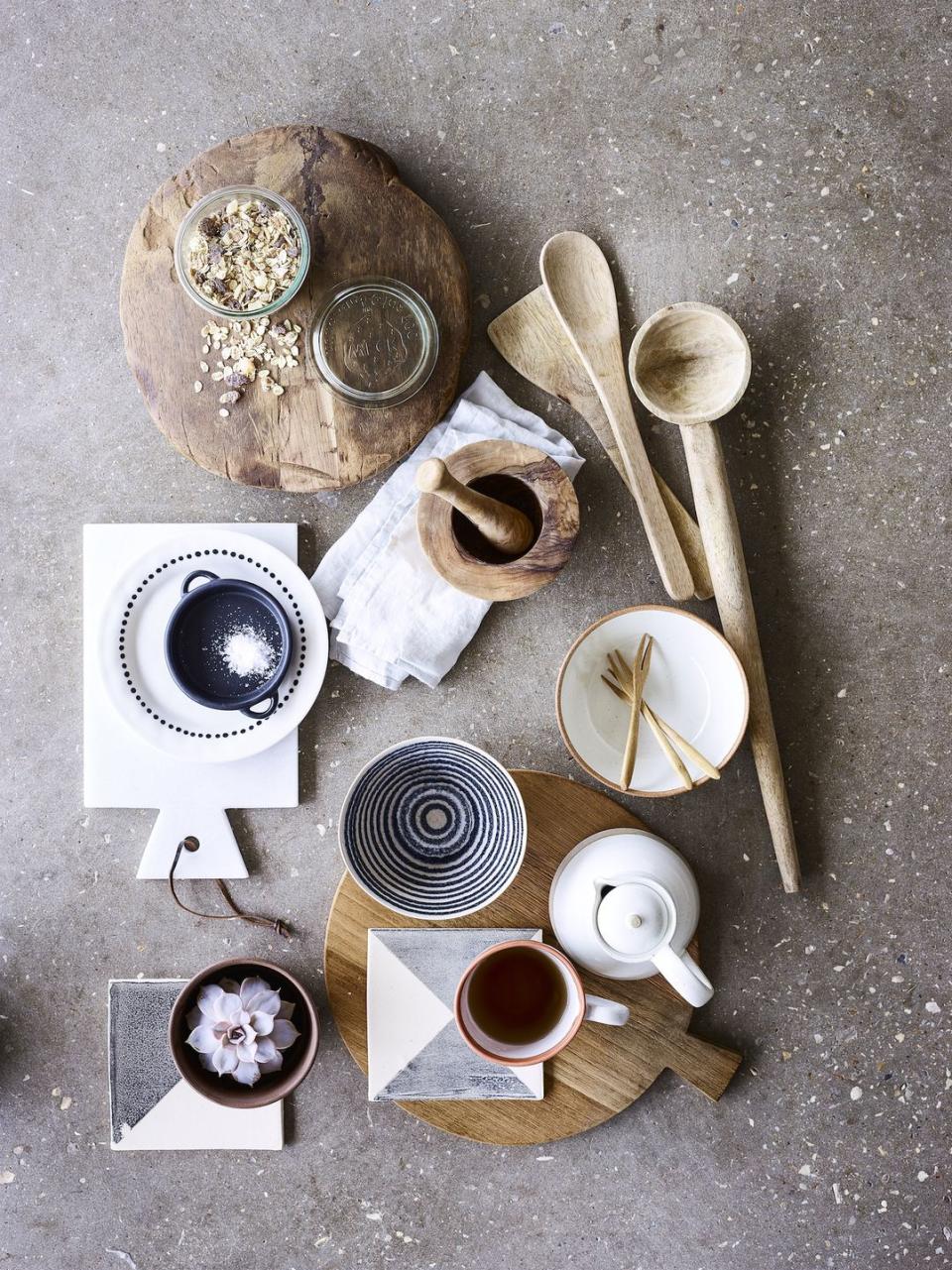Creating a Zen space at home (and no, it doesn't need to be perfect)

The Japanese have always understood the importance of creating a peaceful home to help its inhabitants feel happy and nurtured. And now is the perfect time to learn from their approach, says Jane Alexander
The benefits
Zen is tailor-made for our stressful world. There’s something about the simplicity and serenity of a home designed around Japanese principles that makes us breathe deeper and lets our shoulders sink that bit lower. Coming from a school of Buddhism that dates back thousands of years, Zen arrived in Japan from China and elevates simplicity to an art form, making the home as much meditation space as living hub. And it doesn’t just look good; research shows Zen can boost our health and vitality, increasing happiness, energy, concentration and even problem solving.
'Zen is the perfect tool for modern life,' says Zen master Julian Daizan Skinner, founder of Zenways. 'It works with your body, mind and energy to create greater wellbeing, vitality and awareness.'
Lighting
Zen is all about blurring the lines between inside and out. If you have a lovely view and aren't overlooked, go nude on your windows. If privacy is an issue, keep everything light and fluid – soft gauze curtains or pale-coloured blinds suit a Zen aesthetic. It isn't all about bright light though. It also plays with shadow, creating different moods with screens and diffused lighting. Shōji is the traditional paper and bamboo lattice sliding partition that lets light filter through while separating out large spaces.

Texture
Floors are traditionally wood or stone, though polished concrete or earthy tiles work well too – they all help you to stay earthed and grounded. 'Walking mindfully in bare feet (both indoors and out) is a classic Zen practice,' says Zen meditation teacher Kim Bennett, founder of Serenity Retreat. Explore Etsy or seek out local craft fairs and find things that make your hands smile when you hold them.
Squeezing pebbles (between fingers or toes) is a form of self-shiatsu, baskets are both practical and beautiful (Muji has a good selection), and basketwork or bamboo also make light-diffusing light shades if you want to break away from classic Japanese paper ones (try Ikea’s Sinnerlig bamboo pendant lamp).

The pared-back Zen home originally came about through necessity, but the Japanese swiftly realised that this minimal way of living had benefits way beyond the practical. Full-on Zen spaces can feel a trifle too monastic for most of us, but here are some simple tweaks we could all adopt to make our lives and homes more serene.
Simplicity
Traditional Zen spaces are a lesson in minimalism and there’s no doubt that most of us could do with paring down our stuff. One Zen principle is datsuzoku (freedom from worldly attachments). While we don’t need to turn into monks, a clean, clear home is restful. Look at yours with a critical eye or ask a friend to be honest. What do you really love and need? What are you clinging on to because of nostalgia (those boxes of old birthday cards), guilt (your mother gave it to you), or ego (will you re-read those books or are they there to show how smart you are?). Clear out that clutter – it's clogging up the ki (vital energy) in your home, making you feel muddled. If this sounds suspiciously like feng shui, it’s because it is. 'Feng shui is alive and well in Japan and has been influential for hundreds of years,' says Zen master Julian Daizan.

Colour
If you’re addicted to eye-popping shades, colour clashes and wild pattern, this will all leave you cold. A key aspect of Zen is shizen (naturalness) and its palette takes natural and neutral to a fresh degree. Black and white are the classic combination, but strict monochrome can feel harsh, so soften it up with subtle yet warmer tones – cream, mushroom, calming greys, duck-egg blues and gentle mossy greens look fabulous against natural wood and stone. Earthborn has a wide range of paint formulated to strict environmental standards.
Think Rothko rather than Rubens for any artwork – one simple striking piece that leads the mind into meditation. The classic Zen brushstroke circle enso, that stands for enlightenment, the universe and mu (the void), would look striking on clear walls. Find examples on Etsy or practise painting it yourself. Calligraphy and mindful art are both great Zen practices for focusing the mind and coming into the moment.

Scent and sound
Seijaku is the Zen principle of tranquillity, and a key part of Zen lifestyle is the practice of meditation, sitting quietly, focusing on the breath, just being. Finding stillness, solitude and silence can be tough in our frenetic lives, but try switching off distractions for at least part of the day. Do you always have music on? Does your phone constantly ping alerts? Try turning it off and notice how you feel.
Tune in to the natural sounds around you – birdsong, the wind in the trees. If outside sounds are just too distracting, explore tracks for Zen meditation on Spotify or YouTube. Bells are a key part of monastic life and their clear chime can help you sink into meditation (Zenergy meditation chime, soundtravels.co.uk). Burn some incense to complete the temple feel – the practice dates back to the eighth century in Japan and is believed to calm the mind and focus intention (vectiskarma.co.uk has a good selection of Japanese incense).

Plants
We all know the benefits of shinrin-yoku (Japanese forest bathing), but bringing nature inside is also therapeutic. Plants don’t just look good, there’s a growing body of research that shows they can make us feel more settled and connected, while increasing concentration and improving memory. It’s down to the way they trigger the release of the happy-making neurotransmitters dopamine, serotonin and oxytocin. Bamboo and dragon trees (dracaena) are both very Zen, but just choose what makes you smile. The Morvah ceiling hanging planter from Heal's lets you garden vertically and has those clean clear lines you’re after (macramé just won’t cut it). If you’re hopeless with plants, maybe invest in a tabletop Zen garden – raking patterns in sand is supremely soothing (Etsy has a good selection).
Furniture
Traditional Japanese furniture hugs the floor and a low table with cushions for seating is not only sociable but, over time, will strengthen your back and create flexibility in your hips and legs. Too tough? Mid-century furniture has the clean lines Zen loves, while floor cushions and beanbags in sludgy neutral tones are great for low-level lounging. Try the Zen lounger from ambientlounge.co.uk, and a hanging chair (Bali rattan hanging nest ball chair from cielshopinteriors.com) is perfect for quiet contemplation.
Futons are ideal for small spaces or for when you have overnight guests as they can be rolled up during the day. They’re also well-known for easing bad backs as they’re super-firm and don’t sag (The Futon Company has a good selection; futoncompany.co.uk). If you can’t give up your beloved memory foam there’s nothing to stop you plonking a mattress on a futon base (or get creative with pallets and make your own low-level bed or sofa bases).
Wabi-sabi lies at the heart of Zen philosophy. It’s all about making the very most of life, accepting that things can never be perfect. Wabi means transient beauty, while sabi is the beauty of nature and ageing. Together they teach us not just to accept transience and imperfection, but to honour it. There are seven key principles:
kanso – simplicity
fukinsei – asymmetry or irregularity
shibumi – beauty in the understated
shizen – naturalness and unpretentiousness
yugen – subtle grace
datsuzoku – freeness
seijaku – tranquillity.
Those ceramic bowls mended with gold-dusted lacquer (kintsugi) that you see all over Instagram are just the start of wabi-sabi – but they're a good way to understand the principle. Rather than throwing away something old or broken, you mend it or upcycle it, relishing its new form. It’s the antidote to our modern-day pursuit of perfection. Find wabi-sabi in mismatched china, in visible mending, in faded fabrics and the wonky handmade mug that didn’t quite make the grade.
Wabi-sabi isn't just about physical objects either. It’s a total mindset. 'It's about finding beauty in things and people just as they are, not how we wish they might be,' says Kim Bennett. 'Above all, it’s about being kind and compassionate to ourselves – not beating ourselves up for our imperfections. It's a call to slow down, to pause, to be mindful and present in the moment.' The joy of Zen is that imperfection and asymmetry are built into its philosophy. 'Zen teaches that mistakes can be beautiful,' says Kim. 'It's a great life lesson.'
Jane Alexander is the author of Spirit of the Home – How to Make Your Home a Sanctuary (HarperCollins) and many other wellbeing titles. Her latest book is The Energy Secret (Kyle Books). Her website is exmoorjane.com and she’s on social media as @exmoorjane.
This feature originally appeared in House Beautiful magazine.
Like this article? Sign up to our newsletter to get more articles like this delivered straight to your inbox.
In need of some positivity or not able to make it to the shops? Subscribe to House Beautiful magazine today and get each issue delivered directly to your door.
You Might Also Like



